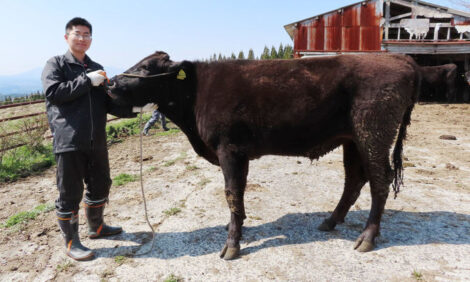



ADM launches cross-species report on early-stage nutrition
Learn real-world solutions for five specific early-stage nutrition issues that producers encounter around the worldMilan Hruby, vice president of Creation, Design and Development at ADM, spoke recently to Global Ag Media’s Sarah Mikesell at World Pork Expo in Des Moines, Iowa, USA about a new report that offers real-world solutions for early-stage nutrition problems.
Milan, give us an overview of your report on early-stage nutrition.
The Early-Stage Animal Nutrition Report highlights some of the challenges we have seen in early-stage nutrition and it’s cross species - swine, poultry, ruminant and aquaculture. Beside highlighting the challenges, it also looks at some of the innovative opportunities to deal with some of the issues.
We are a global business, so when we were putting the report together, we really relied on what we hear from customers not just in the United States but around the globe. We were really focused on the potential solutions and experiences we have in our portfolio to fill some of the gaps that our customers are asking us to fill.
Tell me about the details of the report?
It is very practical. Again, from the different interviews and interactions we have had with customers, we can see that early nutrition is a topic that is especially important to producers, whether they are in North America, Asia or Europe.
For the topic, five specific considerations came up as concerns. The first consideration was focusing on the maternal environment. We know that gestation and lactation can impact the functioning of a young animal. But it’s not just the young animal, it goes beyond that to the full productive age.
The second was gastrointestinal tract maturation. The importance of getting the nutrients quickly and increasing the need for nutrients in the young, growing animal.
The third part was a critical part, and we are here, as you mentioned, at the World Park Expo, for weaning and palatability and the issues related to it. For example, feed intake side and how we can help customers overcome weaning challenges.
The fourth is immune function challenges and maybe more of immune maturation. We see those young animals being relatively immature. Customers are faced with these immunity issues, and we considered how we can assist in this area.
The final consideration would be on the environmental conditions. Things like heat stress, mixing separate groups or populations of animals, humidity, management issues. We are determining if nutrition can help in those areas.
The five considerations were developed for this report based on all the different interactions we have had with our customers.
The report seems designed for people to be able to find real solutions to everyday problems on the farm?
That is so great to hear because that was our objective - to make it very practical and relevant to work on the issues that our customers are facing all around the globe. I look at it as a roadmap. It is a relatively straightforward way for customers to look at those five areas and find something they can improve in their operation.
It could happen that all five are already taken care of or maybe there is a need to focus more on the gestation and lactation side. Or the immune side might need some support or a boost to improve the overall health of the young animals is needed. It allows a very customized approach to how the report is being used.
To read the full report, click here.



